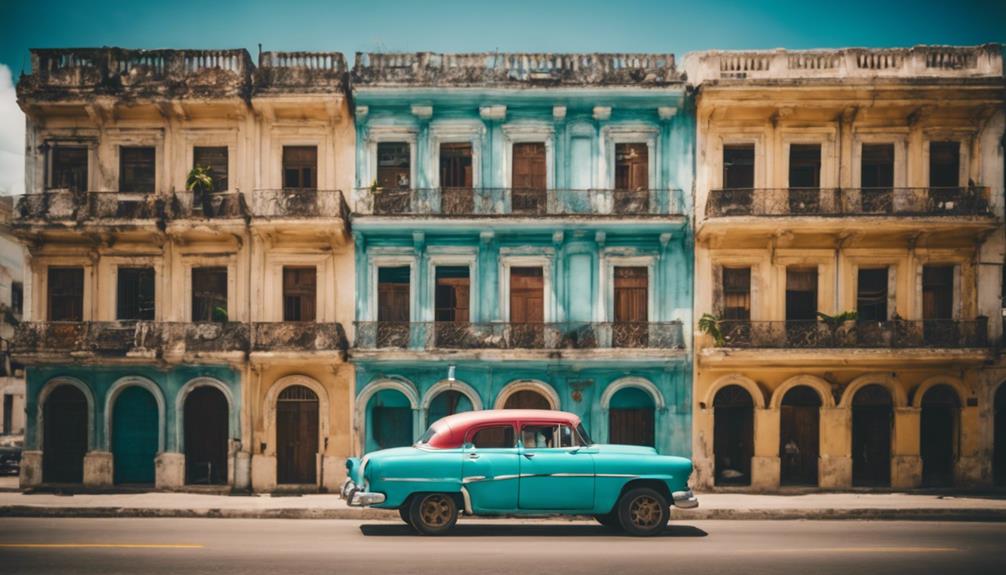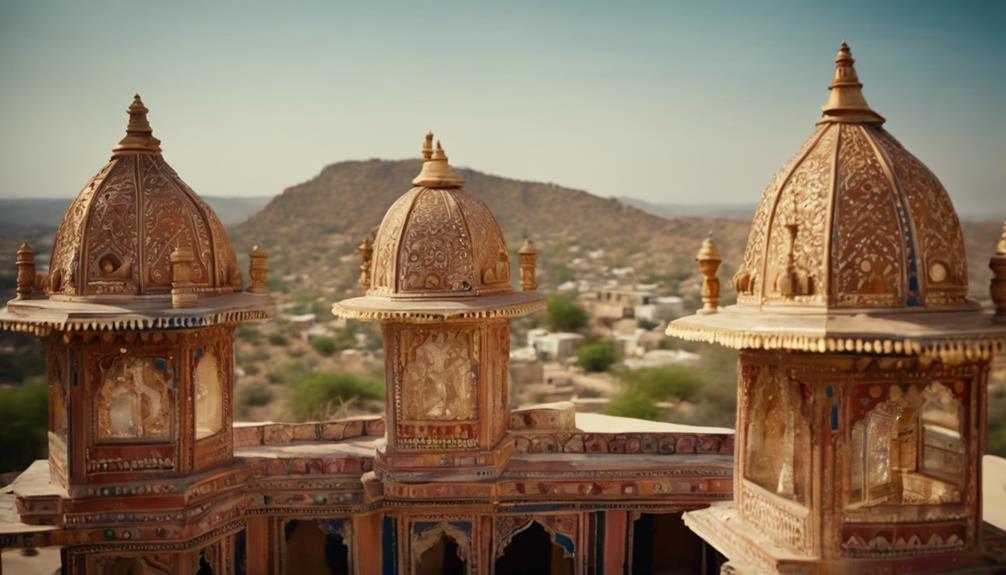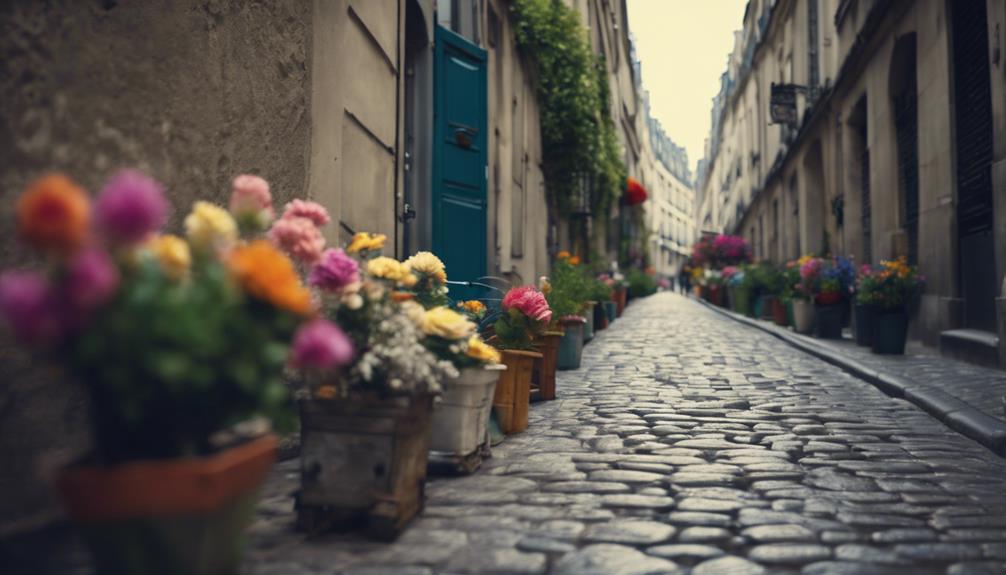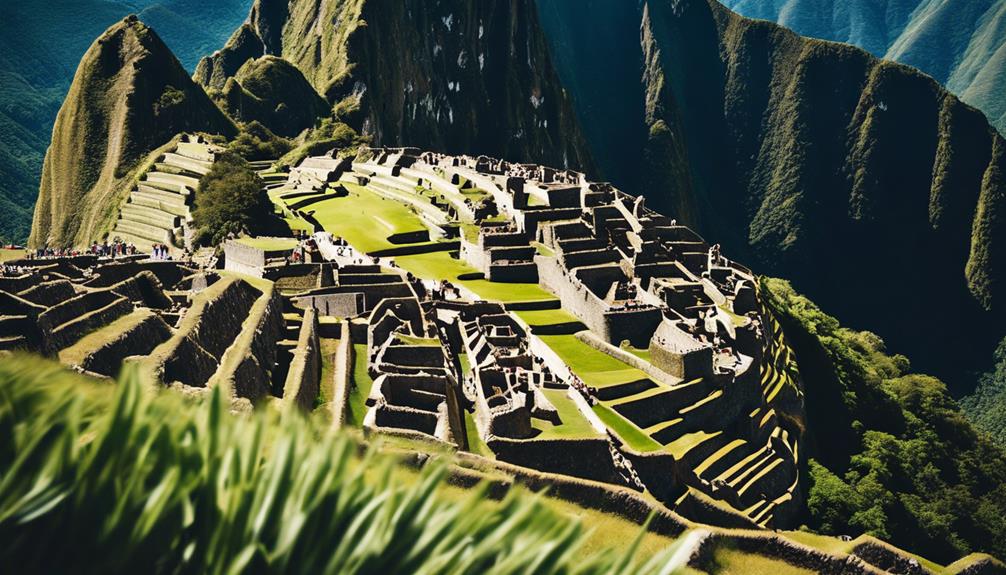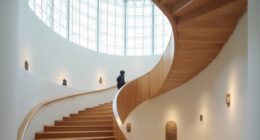Table of Contents Show
There may be products. Products are independently selected by our editors. We may earn an affiliate commission from the links with no charge to you, example: as Amazon Affiliate.
I adore immersing myself in the Colonial Architecture of Havana, with its mesmerizing blend of Moorish, Spanish, Italian, Greek, and Roman styles. The history of buildings like Castillo de la Real Fuerza and Catedral de San Cristóbal de la Habana fascinates me. The well-preserved Spanish colonial squares and baroque elements in Old Havana tell stories of resilience and cultural exchange. Exploring these architectural gems is like stepping into a living history book. The harmonious fusion of traditional Spanish colonial squares with diverse influences creates a truly unique experience. The architectural journey in Havana is a captivating adventure waiting to unfold.
History of Colonial Architecture in Havana
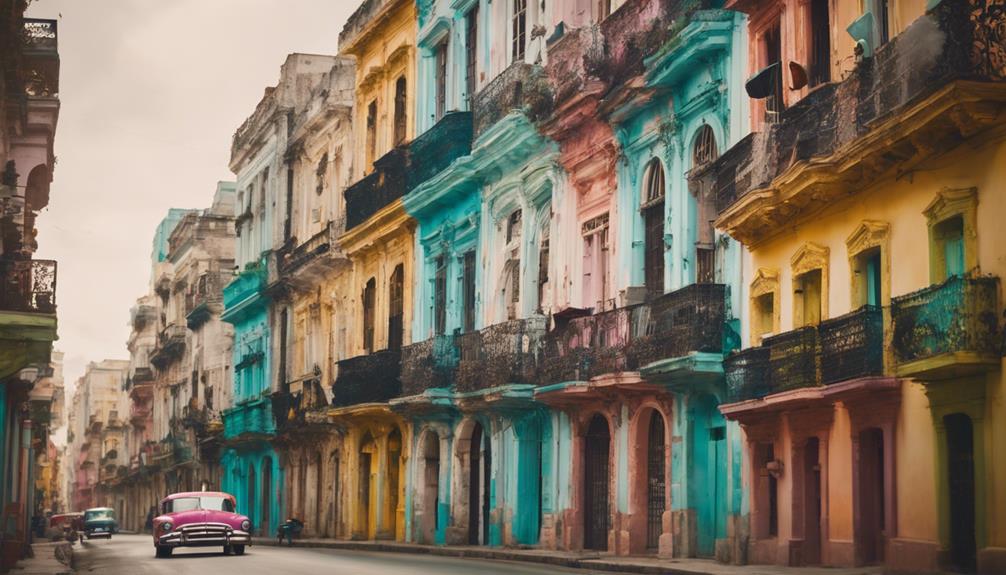
The history of colonial architecture in Havana traces back to the 16th century when Spanish conquistadors laid the foundation for the city's rich architectural heritage. Old Havana stands as a proof to this legacy, showcasing a blend of Moorish, Spanish, Italian, Greek, and Roman styles that reflect the diverse cultural influences on the city's development. The colonial buildings in Old Havana, such as the iconic Castillo de la Real Fuerza and the majestic Catedral de San Cristóbal de la Habana, highlight Havana's strategic importance as a key port in the Gulf of Mexico during the colonial period.
Exploring Old Havana allows me to immerse myself in well-preserved examples of Spanish colonial squares and baroque elements, offering a vivid glimpse into the city's fascinating past. The intricate details of the colonial architecture in Havana reveal a story of resilience, innovation, and cultural exchange that continues to enchant visitors from around the world.
Top Must-See Colonial Buildings in Havana
When exploring Havana's colonial architecture, you can't miss the Cathedral of Havana, a striking example of Cuban Baroque design.
The Palace of the Captains General, now home to the City Museum, is another must-see for its historical significance.
Iconic Colonial Landmarks
Exploring Havana's iconic Colonial Landmarks reveals a fascinating journey through history and architectural splendor. When visiting Havana, the following colonial buildings are a must-see:
| Landmark | Description |
|---|---|
| Castillo de la Real Fuerza | The oldest stone fortress in the Americas, dating back to the 16th century, showcasing colonial military architecture. |
| Catedral de San Cristóbal de la Habana | A UNESCO World Heritage Site featuring stunning Baroque architecture, a true masterpiece to admire in Havana. |
| Palacio de los Capitanes Generales | Once the residence of Spanish governors, now a museum displaying colonial artifacts and art, offering a glimpse into history. |
| Palacio del Segundo Cabo | A Neoclassical gem that served as the second-highest office in colonial Cuba, now hosting cultural exhibitions for visitors to enjoy. |
Architectural Heritage Highlights
Embarking on a journey through Havana's architectural heritage reveals a captivating blend of history and splendor. Discover these top must-see colonial buildings in Havana:
- Cathedral of Havana: A striking example of Cuban Baroque architecture from the 18th century.
- Palace of the Captains General: Former residence of Spanish governors, now a museum showcasing elegant colonial design.
- Castillo de la Real Fuerza: One of the oldest stone forts in the Americas, offering panoramic views of the city, dating back to the 16th century.
- National Capitol Building: A neoclassical icon with a grand dome and intricate details, reminiscent of the U.S. Capitol.
- Plaza de Armas: The oldest square in Havana, featuring historic buildings like the Palacio del Segundo Cabo and the Templete.
Architectural Features of Havanas Colonial Buildings
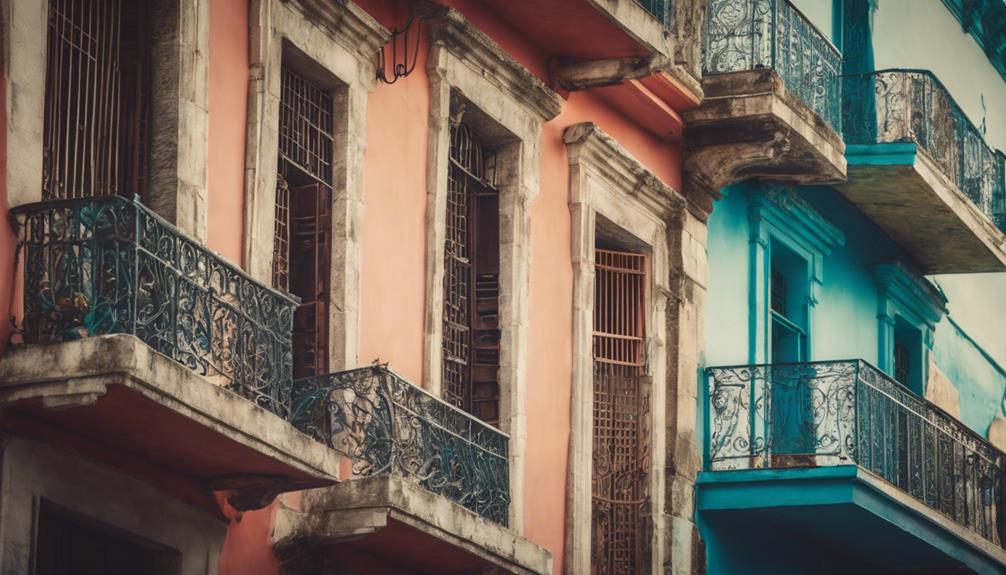
In Havana's colonial buildings, one can admire a harmonious blend of traditional Spanish colonial squares and a diverse range of architectural influences. These structures in the Havana Viejo district showcase a fusion of Moorish, Spanish, Italian, Greek, and Roman architectural styles.
Walking through the streets, one encounters examples of early Spanish-influenced and Cuban Baroque architecture in iconic buildings like Convento de Santa Clara and the Cathedral in Plaza de la Catedral. Havana, known for being the most heavily fortified city in the Americas during the colonial and baroque period, boasts impressive architectural features that reflect its historical significance.
The colonial buildings not only stand as a reflection of the city's rich architectural heritage but also offer insights into the intricate craftsmanship and design elements of that era. From ornate facades to grand plazas, Havana's colonial architecture invites visitors to explore a world where the past seamlessly intertwines with the present, creating a fascinating tapestry of history and innovation.
Preservation Efforts in Havana
Led by city historian Eusebio Leal, preservation efforts in Havana have been pivotal in restoring its historic buildings. The ongoing initiatives not only aim to safeguard the architectural treasures of Havana but also contribute to the city's cultural and economic resurgence.
Here are some key points to evoke emotion in understanding the importance of preservation efforts in Havana:
- Cultural Resilience: Each restored building in Havana tells a story of resilience and determination, showcasing the city's commitment to preserving its past.
- Architectural Harmony: The blend of classic and modern architectural styles in Havana creates a unique urban landscape that captivates the soul.
- Touristic Allure: Preserved buildings attract tourists seeking to immerse themselves in Havana's rich history and architectural beauty.
- Economic Prosperity: Restoration projects not only conserve history but also stimulate economic growth through increased tourism and investments.
- Identity Preservation: By safeguarding its architectural heritage, Havana maintains its identity and guarantees that future generations can appreciate its historical significance.
Exploring Havanas Colonial Districts
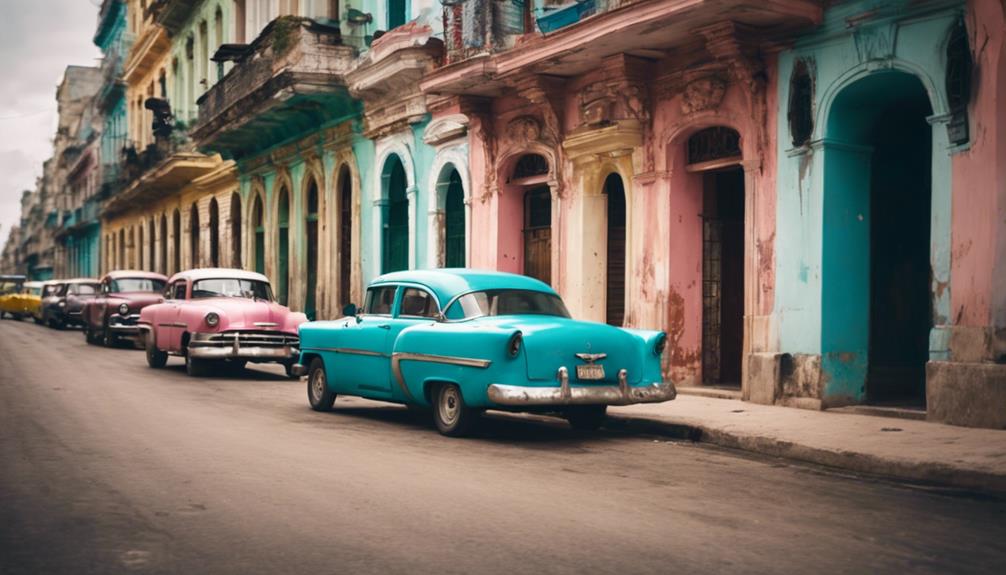
Immersing myself in Havana's colonial districts reveals a mesmerizing blend of Spanish colonial, baroque, and neoclassical architecture. Walking through the streets of Old Havana, the historical richness is palpable, with iconic landmarks like the Cathedral of Havana and Plaza de Armas narrating tales of the city's colonial past.
Venturing into Vedado, a contrasting scene unfolds as modernist influences intermingle with traditional colonial structures, offering a diverse architectural experience that captivates the senses.
In these districts, the architectural exploration is a feast for the eyes. The cobblestone streets lead to vibrant buildings adorned with intricate details, creating a picturesque backdrop that transports visitors back in time. Among the architectural gems waiting to be discovered is the San Francisco de Asis Convent, a prime example of art nouveau architecture nestled within Havana's colonial charm.
Exploring Havana's colonial districts not only allows for a deeper understanding of the city's history but also provides a canvas for innovation and inspiration in the arena of architectural appreciation.
Colonial Architectural Tours in Havana
Exploring Colonial Architectural Tours in Havana reveals the city's rich history and cultural heritage through its intricate Spanish colonial mansions and courtyards. These tours offer a unique opportunity to immerse oneself in the architectural wonders of Havana, providing a deeper understanding of its past and present. Here are some reasons why these tours are a must-do for architecture enthusiasts:
- Immerse in History: Step back in time as you wander through the well-preserved Spanish colonial structures, feeling the echoes of centuries past.
- Architectural Splendor: Marvel at the intricate details and craftsmanship of the colonial mansions, showcasing a blend of European and Caribbean influences.
- Cultural Exploration: Discover the fusion of Spanish colonial architecture with Cuban flair, reflecting the diverse heritage of the city.
- Preservation Efforts: Witness firsthand the ongoing restoration projects that aim to safeguard the beauty and authenticity of these architectural treasures.
- Architectural Evolution: Gain insights into how Havana's architecture has evolved over time, from its colonial origins to modern-day influences.
Best Photography Spots in Havana
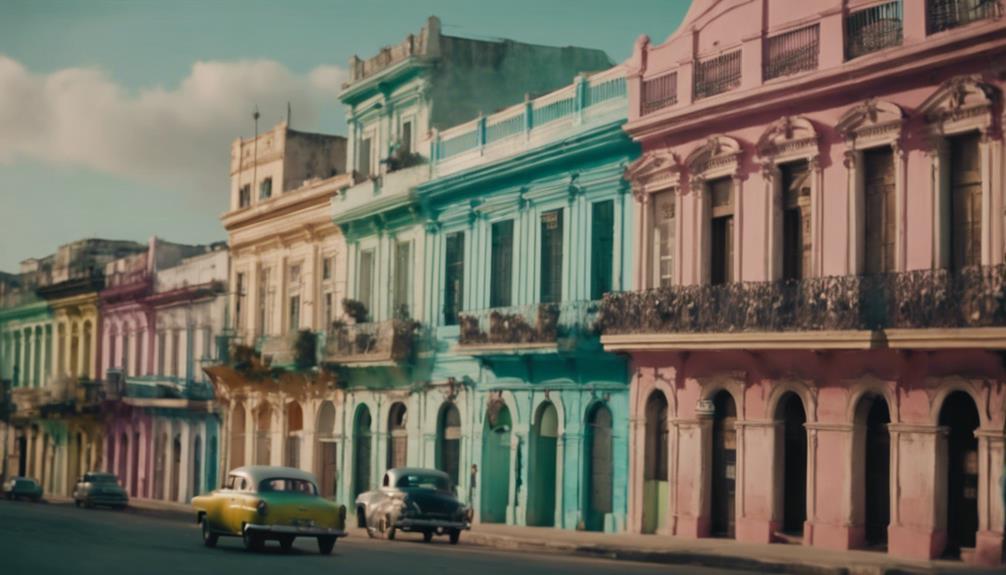
As we shift our focus to the best photography spots in Havana, travelers can capture the city's vibrant spirit through its colorful facades and iconic landmarks. Old Havana's historic buildings boast stunningly colorful facades, perfect for creating vibrant and dynamic images. Plaza de la Catedral, with its Baroque architecture and charming cobblestone streets, offers a picturesque setting for capturing the essence of Havana's architectural beauty. The Malecon, Havana's iconic seawall, provides a unique backdrop that combines stunning architecture with breathtaking sea views, ideal for creating enchanting photographs.
For lovers of architecture, the Capitolio building is a must-visit photography spot, showcasing the grandeur of neoclassical design in Havana. Additionally, exploring neighborhoods like Vedado can lead to discovering hidden gems for candid photography opportunities. The art deco influences in places like Calle de San Rafael offer a blend of modernist architecture against the backdrop of Havana's colorful streets, adding a touch of innovation to your photography collection.
Future of Colonial Architecture in Havana
I see a promising future for Havana's colonial architecture as preservation efforts led by city historian Eusebio Leal continue.
Modern influences on architecture could bring innovative approaches to restoration projects, blending the old with the new seamlessly.
The increasing tourist interest in Havana's historic charm serves as a driving force behind the restoration of these architectural treasures.
Preservation Efforts in Havana
Preservation initiatives in Havana are essential for safeguarding the city's colonial architecture and cultural heritage for future generations. Collaborative efforts, such as those led by city historian Eusebio Leal, are vital in revitalizing decaying colonial buildings and guaranteeing their cultural significance endures.
The ongoing restoration work focuses on iconic landmarks like the Capitolio and Catedral de San Cristóbal de la Habana, preserving their historical integrity. These projects not only restore architectural beauty but also contribute to Havana's identity and cultural legacy.
The future of Havana's colonial architecture relies heavily on these preservation efforts to maintain its rich heritage for generations to come.
- Collaborative initiatives guarantee the city's cultural significance endures.
- Restoration work focuses on preserving iconic landmarks like the Capitolio and Catedral de San Cristóbal de la Habana.
- Projects contribute to Havana's identity and cultural legacy.
- The future of colonial architecture in Havana hinges on ongoing preservation efforts.
- Safeguarding heritage for future generations through restoration projects.
Modern Influences on Architecture
Havana's evolving architectural landscape embraces a fusion of art nouveau, art deco, and eclectic styles, hinting at a vibrant future for its colonial architecture. The city's rich history and diverse influences, from the 1912 Spanish Railway Terminal to the Capitolio, showcase a unique blend of traditional Spanish colonial and modernist designs.
Prominent structures like the Nacional de Bellas Artes and the Edificio Bacardi stand as affirmations to Havana's architectural diversity. These modern influences not only reflect the city's social and political past but also pave the way for innovative architectural developments.
Havana's ability to intertwine its colonial heritage with contemporary styles creates an engaging environment for architectural enthusiasts and photographers alike, promising an exciting evolution in its built landscape.
Tourist Impact on Restoration
Tourist interest in restoration efforts for colonial architecture in Havana has greatly influenced the preservation and maintenance of historic buildings in the city. As Havana became a hub for travelers who love architecture, the impact of tourists on restoration projects has been profound. The future of colonial architecture in Havana is now brighter thanks to the following emotional aspects:
- Inspiration: Witnessing the beauty of restored buildings ignites a sense of awe and wonder.
- Connection: Tourists feel a deep connection to Havana's history when they contribute to preservation efforts.
- Gratitude: Visitors express gratitude for being able to witness the restoration process firsthand.
- Hope: Each restored building symbolizes a promising future for Havana's architectural heritage.
- Empowerment: Tourists play a crucial role in empowering local communities to preserve their cultural legacy.
Conclusion
As I walk through the cobblestone streets of Havana, the sun sets behind the colorful colonial buildings, casting a warm glow over the city. The history and beauty of these architectural wonders transport me to a different time.
I can't help but feel grateful for the preservation efforts that allow us to experience the allure of Havana's colonial architecture. I look forward to exploring more of this enchanting city and capturing its essence through my photography.
